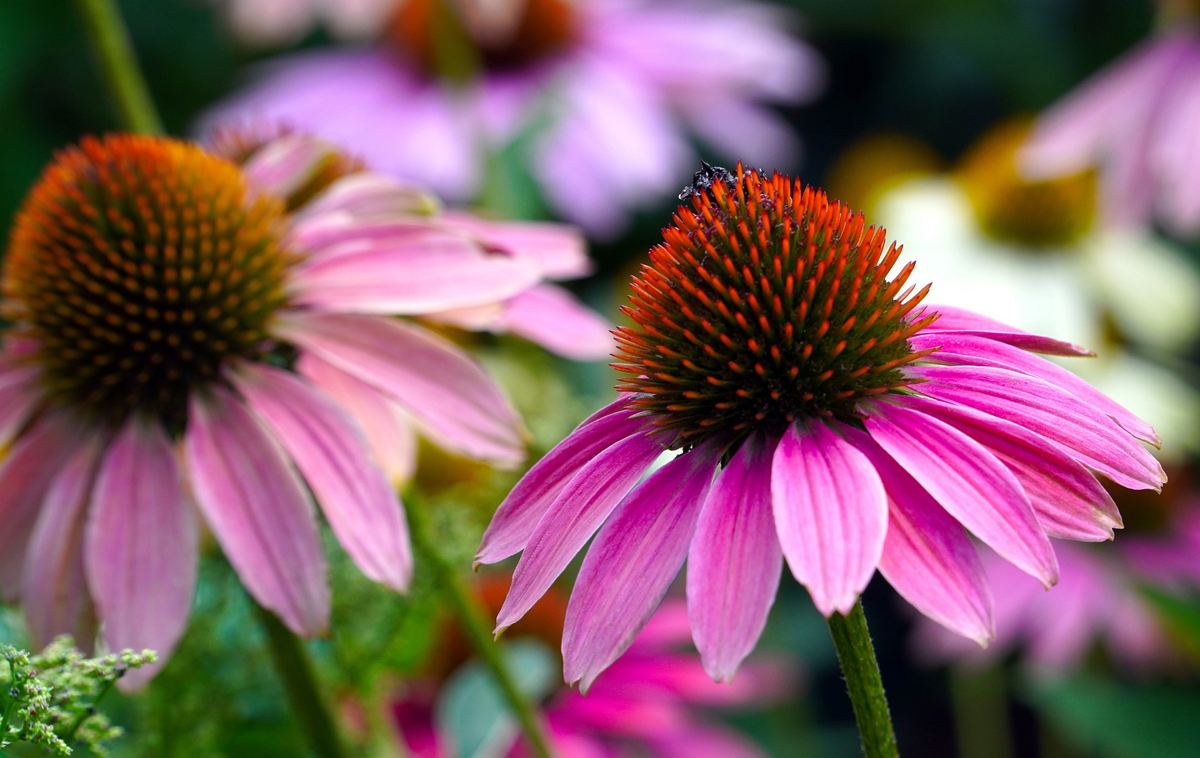For some people, Echinacea is merely a dietary supplement that is purported to prevent a cold. But if you like to garden, you’ll want to discover colorful Echinacea – also known as Coneflowers.
Native to the Central and Eastern United States, Echinacea are a daisy-like flower that have an extra long blooming period throughout spring, summer and into fall. Most people think of Echinacea as purple, like the Magnus Purple variety that was chosen as the Perennial Plant of the Year in 1998. But thanks to the recent popularity of Echinacea, growers are developing a range of colors, from white and yellow to orange and bright pink.
Echinacea are very versatile — they are drought tolerant and can handle late summer heat. They look great in beds or borders, rock gardens and containers, preferring full sun but able to tolerate some shade. They grow tall and straight, making great cut flowers to bring indoors.
Some varieties have pendulous or weeping petals; some are more horizontal, but they all have a large seed cone that hints at the origin of the name. Echinacea comes from the Greek echinos, meaning hedgehog. The seeds attract finches, and butterflies gather to sip the nectar.
Monrovia, a leading grower of plants, suggests some colorful, easy-to-grow varieties to try in your garden: The Orange Meadowbrite Coneflower was the first truly orange colored variety and has a sweet orange tea fragrance. In the same family is the Mango Meadowbrite Coneflower, with a mango yellow color and sweet fragrance.
Most Echinacea can reach two- to four-feet tall, so for those with smaller gardens or container plantings, Pixie Meadowbrite Coneflower is an ideal choice. Pixie is a true dwarf Echinacea reaching 18 to 20 inches tall and 20 inches wide. This adorable mini coneflower yields a profusion of pink blooms. Kim’s Knee High Coneflower is another dwarf variety, with dainty purple-pink pendulous flowers and dense foliage.
Ancient history has shown that fragrant plants were used to heal the mind, body and emotions so it seems appropriate to say that aromatherapy begins in the garden, and, outside of the garden, when summer’s blooms have long gone, one may remember the heavenly scents of spring and summer by utilizing essential oils, which are the heart, soul and spirit of the plant, the true essence. These can be applied to the body for skin care, for therapeutic use with massage, or, can just scent your home with an oil diffuser. Just another way to remember the scents of the garden!
The Author:
To learn more about Echinacea and get design ideas for incorporating them in your garden, visit www.monrovia.com.
